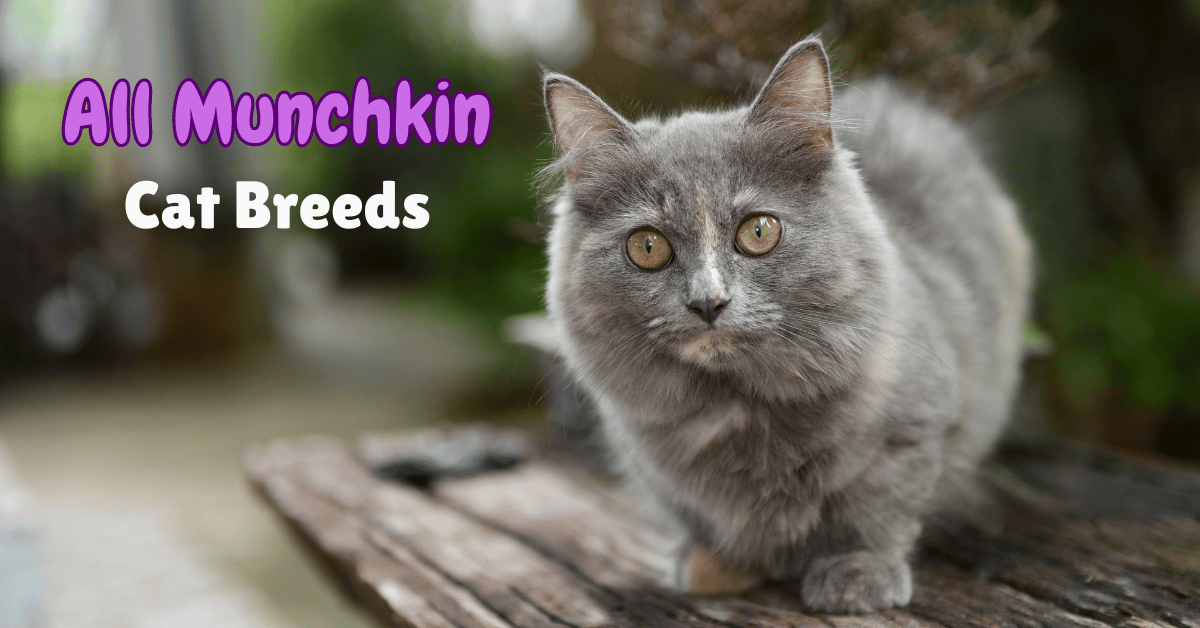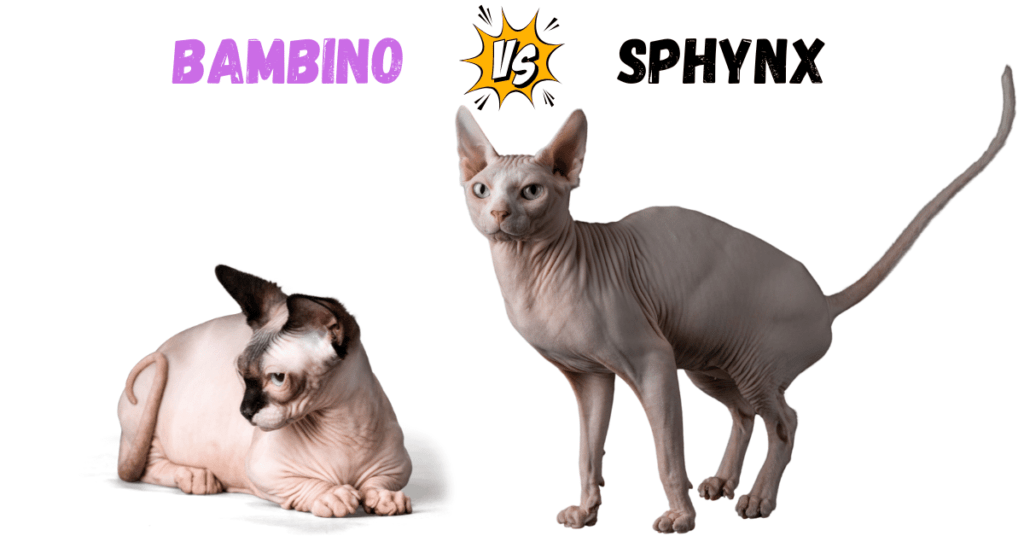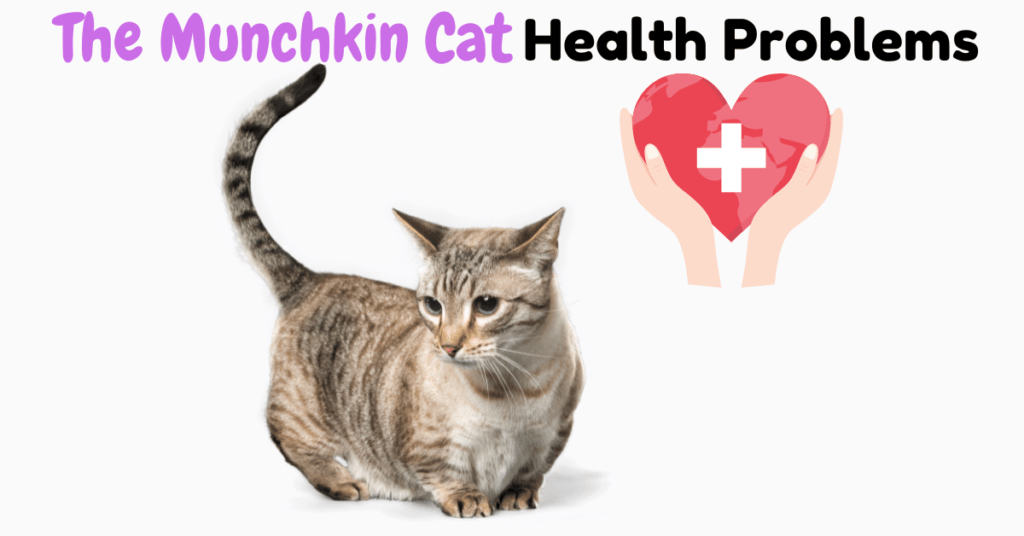This post contains affiliate links and I will be compensated if you make a purchase after clicking on my links.
Exploring Diverse Munchkin Cat Breeds: An Introduction
Munchkin cats are bred from a variety of partners, each resulting in a distinct variation. Despite the lack of comprehensive data, the breed’s short legs, stemming from a unique genetic mutation, have not been linked to any severe health issues according to expert evaluations.
Although the Cat Fanciers’ Association (CFA) has not fully recognized them, and they remain a subject of controversy, Munchkins are generally as healthy as their crossbred counterparts and often healthier than purebreds. These cats are still relatively rare and continue to be refined as breeders learn more.
Munchkin cats typically live for 12–15 years with proper care. They feature a range of coat patterns, colors, and lengths, thanks to extensive crossbreeding, which has also introduced new and diverse appearances.
Fact Highlight: Many new versions of Munchkin cats are being created, all featuring those signature short legs. Expect to see even more than these initial 8 breeds as breeders continue to explore new possibilities.
1. Napoleon (Minuet)
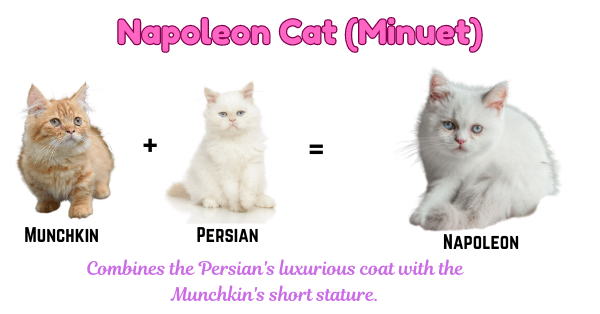
Developed in 1996 by Joe Smith, the Napoleon cat quickly became one of the most beloved breeds thanks to its distinctive, round-faced charm and large, expressive eyes. Weighing between 5-9 lbs and with a lifespan of 12-14 years, Napoleons are celebrated for their mix of playful spirit and social nature.
A delightful cross between a Munchkin and a Persian, the Napoleon boasts the best of both worlds—combining the Munchkin’s compact size with the Persian’s luxurious fur and sweet disposition. These cats are not overly active but will still enjoy a playful scamper around the house occasionally. Known for their sociability, Napoleons thrive on human interaction and often find themselves at the center of household activities.
While their appearance is irresistibly cute, featuring a variety of colors and patterns like white, cream, and chocolate, grooming requirements vary by coat type. Long-haired Napoleons need daily brushing to maintain their coat, whereas short-haired varieties can be groomed weekly. Regardless of fur length, regular grooming is essential to keep these cuties looking their best.
2. Lambkin
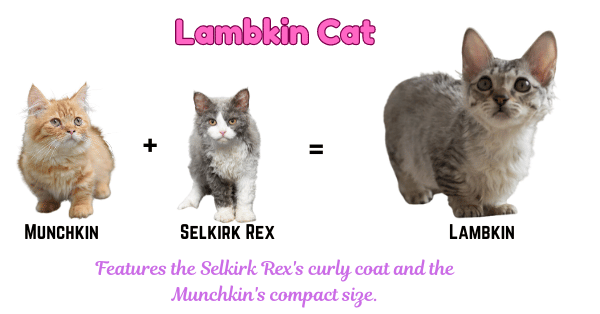
Developed by Terri Harris sometime between 1987 and 1991, who also introduced the Kinkalow, the Lambkin stands out as one of the heaviest Munchkin hybrids, typically weighing between 5-9 lbs, and boasts one of the longest lifespans, ranging from 15-20 years. Their coat can come in any color or pattern, though white is predominantly common.
The Lambkin, a unique cross between a Munchkin and a Selkirk Rex, is renowned for its curly coat endowed with soft and woolly guard hairs—a trait inherited from its Selkirk Rex lineage. This breeding results in a cat that combines a loving and tranquil demeanor with a strong social affinity, rarely enjoying solitude. These cats are known for their intolerance to being left alone; extended periods of solitude can lead to destructive behavior as a result of their separation anxiety.
The breed’s name, Lambkin, aptly reflects their lamb-like woolly coats, which are incredibly soft but demand considerable grooming attention. Regular brushing, at least every other day, is essential to maintain their coat’s health and appearance, along with frequent baths to ensure cleanliness. While most Lambkins sport the characteristic curls of the Selkirk Rex, some may inherit the straighter hair of the Munchkin, diversifying their grooming needs.
3. Bambino
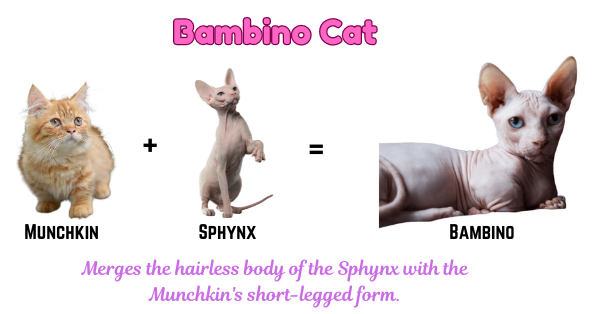
Introduced in 2005 by Pat and Stephanie Osborne, the Bambino is a charming hybrid that combines the distinct traits of the Munchkin and Sphynx breeds. Weighing between 5-9 lbs with a lifespan of 10-14 years, these cats are often seen in elegant shades of cream and black.
The name “Bambino,” derived from the Italian word for “baby,” aptly reflects their perpetual kitten-like appearance, characterized by short legs and a nearly hairless body. Bambinos are known for their friendly demeanor, intelligence, and high levels of affection, often expressing themselves vocally to communicate with their owners.
Due to their sparse coat, Bambinos require careful skin care. Similar to the Sphynx, they need protection from direct sunlight to prevent skin damage. Regular baths are essential to manage oily residues, and when outdoors, sunscreen or protective clothing is necessary to shield their sensitive skin from the elements.
4. Minskin
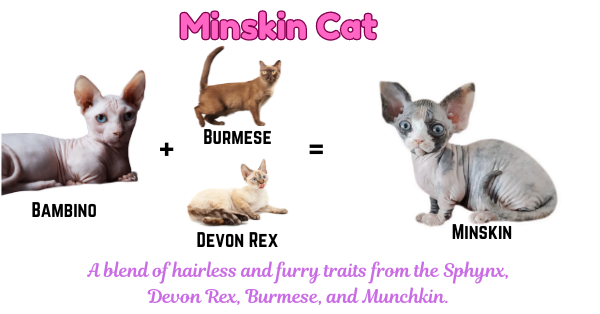
Developed by Paul McSorley in 1998 in Boston, Massachusetts, the Minskin was initially created by crossbreeding the Munchkin and Sphynx to produce what is known as the Bambino Munchkin.
The breed later saw the addition of Burmese and Devon Rex traits in further development phases under McSorley’s guidance. Weighing only 2-6 lbs and with a lifespan of 12-14 years, Minskins are among the smallest and most recent additions to the cat breed world.
This breed’s distinctive feature is its sparse “peach fuzz” coat, primarily found in shades of brown, cream, and white, giving it a unique appearance. The hybridization resulted in a cat that captures the hairlessness of the Sphynx with added patches of short fur on strategic points like the face, feet, ears, and tail. This makes the Minskin an excellent choice for those seeking a near-hypoallergenic cat.
Minskins are known for their playful and friendly disposition, making them great companions for families with children. They exhibit a mischievous streak, keeping their owners entertained with their antics.
While the Minskin’s minimal fur means brushing isn’t necessary, regular bathing is essential to maintain their skin health, ensuring these tiny cats stay as clean and healthy as they are charming.
5. Skookum
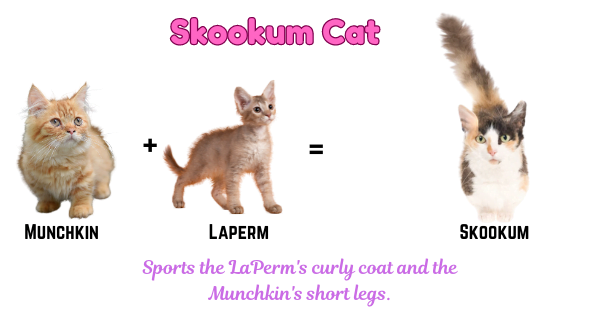
Originating in the 1990s by breeder Roy Galusha in the US, the Skookum was named after a Chinook Native American term meaning brave and powerful. This breed uniquely combines the Munchkin’s short stature with the LaPerm’s distinctively wavy coat. Weighing between 3-7 lbs and living for 10-15 years, Skookums are as durable as they are delightful.
Sporting a range of coat colors from solid to bicolor and color points, Skookums are immediately recognizable by their attractive, natural beach wave-like fur and notably puffy tails. Despite their laidback nature, these cats are not just about looks; they are sweet, affectionate, and highly intelligent, making them adaptable to various households. They maintain a playful disposition that keeps their families entertained.
An interesting trait of the Skookum is the variation in coat texture between genders—males feature kinkier fur while females have softer, more plush coats. Despite their curly appearance, Skookums require minimal grooming; a weekly brush is sufficient to keep their coats in good condition and free from tangles.
6. Dwelf
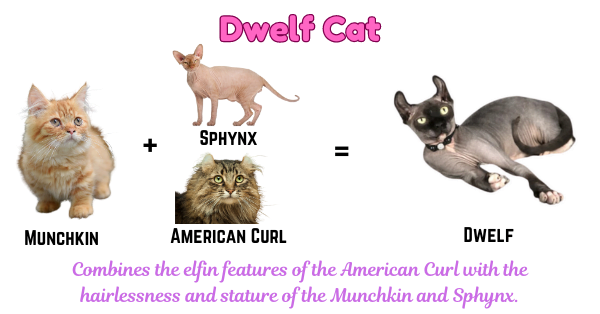
Originating from the US, the rare and intriguing Dwelf is a delightful amalgamation of three distinctive breeds: the Munchkin, Sphynx, and American Curl. Weighing between 4-7 lbs with a lifespan of 12-15 years, Dwelfs sport a striking blend of black and cream colors.
The name “Dwelf,” evoking images of mythical elves, aptly describes their unique appearance, which includes the short legs characteristic of Munchkins, the hairlessness inherited from the Sphynx, and the whimsically curled ears of the American Curl. This blend not only makes them resemble the beloved fantasy creatures, notably Dobby from Harry Potter, but also gives them a look similar to the Bambino with an elfin twist.
Dwelfs are known for their outgoing and energetic personalities. They thrive on interaction and are full of mischief, often seen climbing, jumping, and exploring every nook of their home. Their love for human companionship makes them perfect for families or individuals seeking an engaging pet.
As with other hairless breeds, Dwelfs require careful skin care to prevent sunburns and cope with cold weather. Regular bathing to maintain skin health and clothing in cooler temperatures are essential to keep them comfortable and healthy.
7. Genetta
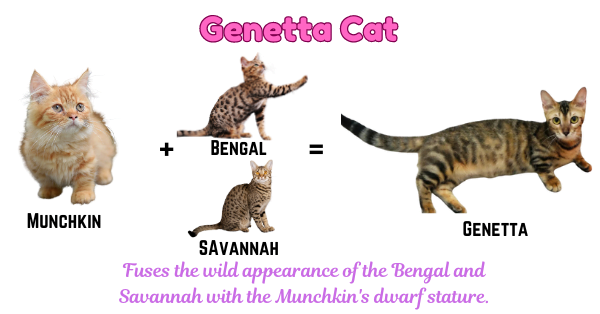
Developed by Shannon Kiley at Pawstruck Cattery in Texas in 2006, the Genetta is a fascinating blend of Munchkin, Savannah, and Bengal breeds. With a weight ranging from 4-8 lbs and a lifespan of 12-16 years, these cats are true pocket-sized predators.
Drawing its name from the spotted African Genet—a wild cat native to Africa and common in southwestern Europe—the Genetta mirrors the exotic appearance of its namesake. This breed boasts a striking coat pattern that varies from marbled to striped, with a vivid mix of red, orange, black, and brown, resembling a miniature tiger.
The Genetta’s unique appearance is enhanced by its wild-like demeanor, yet these cats are surprisingly cuddly and family-friendly. They are highly intelligent and inherently mischievous, requiring ample mental and physical stimulation to stay content. Without sufficient interaction, they may grow restless, making them less suited to being left alone for long periods.
In terms of grooming, the Genetta requires moderate maintenance. Regular brushing once or twice a week is enough to keep their striking coats looking sharp and healthy.
8. Kinkalow
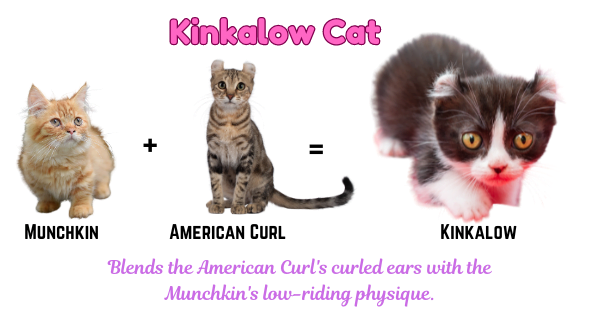
In 1994, Terri Harris from Florida introduced the Kinkalow, a breed characterized by its unique “kink” in the ears and “low” profile due to short legs. Weighing between 3-7 lbs and enjoying a lifespan of 12-15 years, Kinkalows are a rare experimental breed, mixing the traits of Munchkins and American Curls.
This breed showcases adorable curled ears and a low body stance, with tails that often exceed their body length, contributing to their ultra-dwarf appearance. While some Kinkalows may not develop curly ears, they still carry the gene, adding to their rarity and appeal.
Kinkalows are known for their exuberant and playful nature, often described as having “dog-like” qualities. They adore cuddles, frequently follow their owners from room to room, and are eager to be involved in all family activities. Due to their fur and distinct ear shape, regular grooming including brushing at least twice a week and routine ear cleaning to prevent buildup and maintain overall health, are essential.
Future Perspectives on Munchkin Cat Breeds
The diverse world of Munchkin cat breeds is ever-expanding, with new variations regularly appearing. Recognized by The International Cat Association, these breeds are relatively healthy and boast lifespans comparable to, or even exceeding, those of average cats.
Despite their robust health and longevity, Munchkin Cat Breeds are still prone to certain musculoskeletal issues, raising controversy around breeding for such distinct physical traits, which critics argue might be unethical.
As we continue to learn more about these breeds, only time will tell what further insights might emerge about their well-being and the ethical considerations involved.
Meet Sean, a fintech whiz with a penchant for pet purrs and blockchain buzz. After a decade of fintech feats, Sean’s tech talents leaped from ledger lines to litter lines, driven by a passion for pets and a vision for a more connected pet care community. With three critter companions as co-pilots, Sean launched this blog to share a treasury of pet-friendly tech tips and tales.

